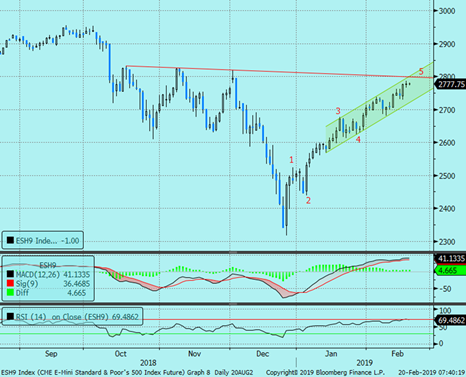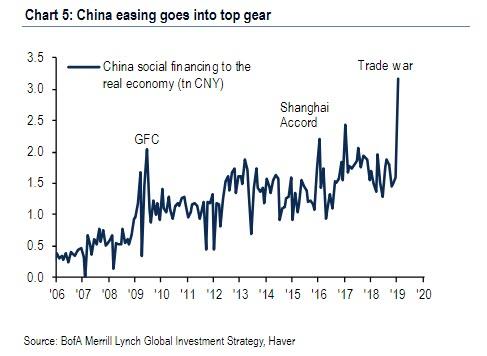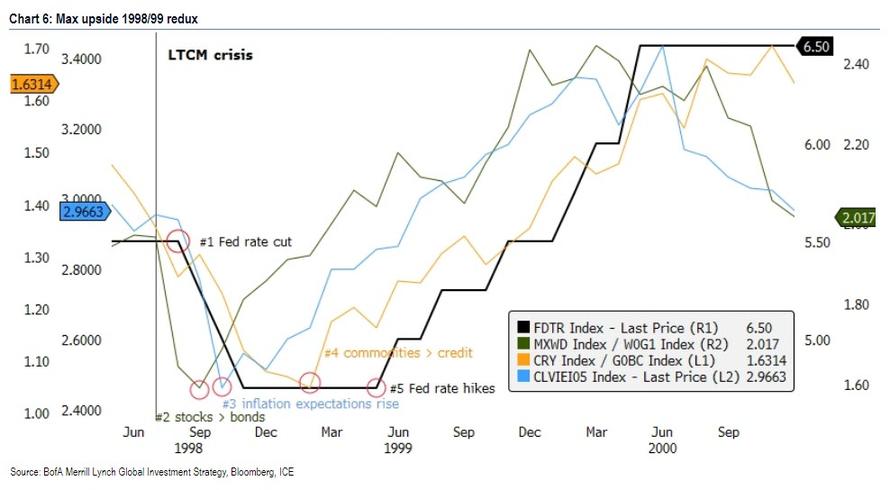Whether traders are actually buying stocks, or as the case now appears to be for 12 consecutive weeks, they are not, is mostly irrelevant: even with 3 straight months of outflows from mutual funds and ETFs, the important thing is that someone is pushing the market higher, and whether that is buybacks or a massive short squeeze, the S&P is rapidly approaching the massive resistance level at 2,800 where the last three breakout attempts have fizzled.
So while technicals will surely be a major hurdle to overcome, there is a case that sends the S&P back to its all time highs around 2,950. According to BofA chief investment strategist Michael Hartnett, while catalysts for the S&P move from 2350 to 2750 were bearish positioning and panicking policy makers, the catalysts for fresh upside to new highs would be “green shoots” & “greed” even as few see EPS acceleration, while most think the Fed is “pushing-on-a-string.”
To make it easier for the bulls, Hartnett then lays out an indicative “green shoots” checklist for EPS emerging from the upcoming earnings recession, would include the following items:
- US 2s10s yield curve steepens to 50bps from 16bps,
- Asia export growth up 7% YoY from -2%,
- global PMI up above 53.0 from 50.7 (Feb survey data poor),
- China financial conditions index (CHBGMCI) up to 95 from 84, which as we noted previously is already taking place thanks to a gargantuan credit impulse/injection which saw China’s Total Social Financing explode in January to the tune of over 5% of GDP.
In addition to the checklist, there are specific lead indicators which will suggest if the dreary macro picture is improving, and these include the Korean KOSPI stock index, Asia FX via the ADXY, strength in semiconductors (SOX) and homebuilders (XHB), and continued rise in oil, all of which currently are trending in the right direction for bulls; In fact, the only major risk-on signal missing right now is a weaker dollar, as DXY lower would show higher dollar liquidity is easing global financial conditions.
So assuming all of this happens, and the market rally is finally justified by improving fundamentals, what then?
Well, as often happens with market, that will be the bearish case, one that result in higher commodity prices and rising inflation, prompting the Fed to resume hiking once again. In fact, according to Hartnett, the upcoming episode of market euphoria and “greed” will be merely a redux of events that took place during the run up to the dot com speculative bubble of 1998/1999, which occurred in the following sequence:
- Asia/EM/LTCM credit shock on Wall St
- “baby bear market”
- Fed panic
- resilient US macro
- Sept’98 Fed cuts
- Oct’98 stocks inflect higher versus bonds
- Nov’98 inflation expectations trough
- Feb’99 commodities inflect higher versus corporate bonds
- Jun’99 Fed starts hiking rates again to burst bubble
- Mar’2000 bubble bursts.
And visually, this is what the 1998/1999 scenario looked like. It culminated with the bursting of the first tech bubble and a recession.
Finally, as he always does, Hartnett concludes with two trade ideas – the first one is the rational, or consensus trade, and the second the contrarian, irrational trade:
- Today’s rational trade is consensus trade: “sell-into-strength”, own corporate bonds, EM assets, US stocks, growth stocks, defensive stocks with yield.
- Today’s contrarian is to be long the irrational: stay long in anticipation of green shoots & “greed” via inflation plays such as commodities, Europe & Japan, value stocks, and cheap cyclicals;
Hartnett’s conclusion: “be an irrational contrarian.”
ds
via ZeroHedge News https://ift.tt/2E7v76M Tyler Durden


